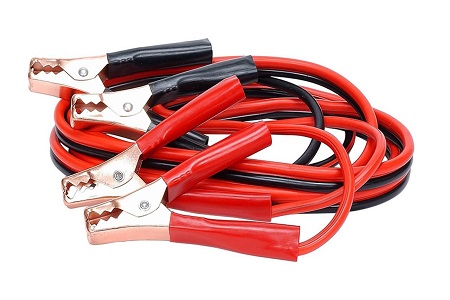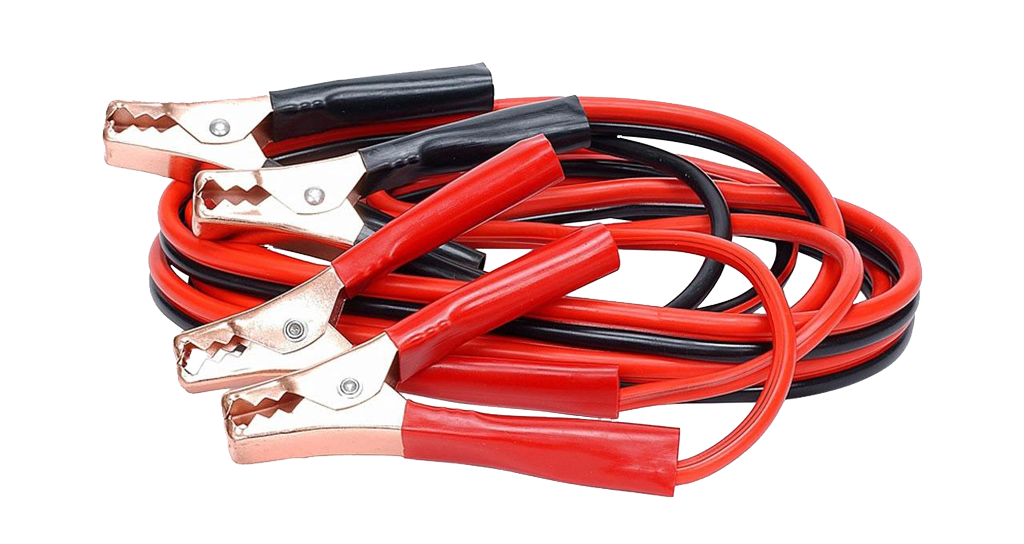Common causes of a flat battery that may leed to a Jumpstart…
SHORT JOURNEYS: Starting the car takes a lot of power from the battery and on a short journey there may not be enough time to recharge and replace this power. Frequent short trips may eventually leave the battery without enough power to start the car.
LACK OF USE: Even when parked, systems like the alarm and immobilizer will draw a small amount of power and over time can run the battery down.
THE WRONG BATTERY: If the battery has been replaced with one that’s less powerful than specified by the manufacturer it can go flat very quickly.
COLD WEATHER: Winter is the busiest time of year for breakdown services and the biggest cause of call outs is flat batteries. Cold weather slows down the chemical reactions in the battery, reducing its power. Winter is also when you’re likely to be putting it under the greatest strain, running electrical systems such as the heater, the lights and windscreen wipers.
LEAVING THE HEADLIGHTS ON: The headlights draw a large amount of power and will flatten the battery very quickly if the car isn’t running. Always leave the lights switched off until you have started the car.
FAULTY CHARGING SYSTEM: The main part of the charging system is the alternator. It looks like a large motor and is driven by a belt attached to the engine. If the alternator is faulty, the battery isn’t charged properly and will eventually go flat. If your battery does fail unexpectedly, ask for the alternator to be checked when the battery is replaced or you could soon end up with another flat battery.
Before Jump Starting
- If your battery is damaged, leaking or corroded, call in a pro do NOT attempt to jump start. We can also check your battery for you!
- Keep metal objects away from the battery. If they cause a spark it could be dangerous.
- Remove loose clothing in case they get caught in moving parts.
- Avoid naked flames and never smoke.
- Make sure headlights and other electronics are off – remove the key from the ignition.

HOW TO JUMP START WITH JUMP LEADS
If you’re jump-starting from another vehicle, make sure the batteries are the same voltage. Most cars are 12v, motorbikes 6v and lorries 24v. Don’t attempt to jump start a battery that looks damaged and keep metal objects away from the top of the battery to avoid causing a spark that might trigger an explosion. Once you’ve got the car going, avoid using non-essential electrical systems such as the radio.
TOP TIP
Make sure the two cars are not touching and the jump leads are not near any moving parts in the engine bay.Step-by-step guide:
- Park both cars in neutral next to each other so that they’re close but not touching. Open the bonnet; the jump lead should be able to reach both vehicles.
- Connect the first end of the RED positive lead to the positive terminal on the working battery. Do the same for the other end of the lead for the flat battery.
- Connect the BLACK negative lead to the negative terminal on the working battery. Attach the other end to a metal (earthing) point, such as a bolt or bracket, away from the dead battery. Some cars have negative jump-starting poles – check your handbook to see if yours does.
- Check the leads are away from moving parts then start the engine of the working car.
- After about a minute, try starting the car with the dead battery. If it doesn’t work, leave it a little longer, but switch off the engine if the leads get hot.
- Once you have your car running, leave the engine on for a couple of minutes to charge the battery.
- Remove the jump leads in reverse to the way you attached them. Make sure they don’t touch together or any metal surfaces. You should then drive for at least 30 minutes or leave the engine running.
- If you can’t get the engine to start, unfortunately you have a bigger problem
HOW TO JUMP START WITH A JUMP PACK
Don’t attempt to jump start a battery that looks damaged and keep metal objects away from the top of the battery to avoid causing a spark that might trigger an explosion. Once you’ve got the car going, avoid using non-essential electrical systems such as the radio.

Step-by-step guide:
Connect leads to pack:
If required, connect the jump leads to the power pack. Make sure the unit is charged and has enough power to jump start the car.
Connect leads to battery:
Connect the positive (red) lead to the positive terminal of the battery. Connect the negative (black) lead to the negative terminal.
Precautions:
Make sure the leads are out of the way of any moving parts and are securely connected. Check the jump pack is secure and won’t move when the engine starts.
Start the car:
Start the car. Remove the leads in reverse order (negative then positive). Be careful not to touch them on the body of the car.

